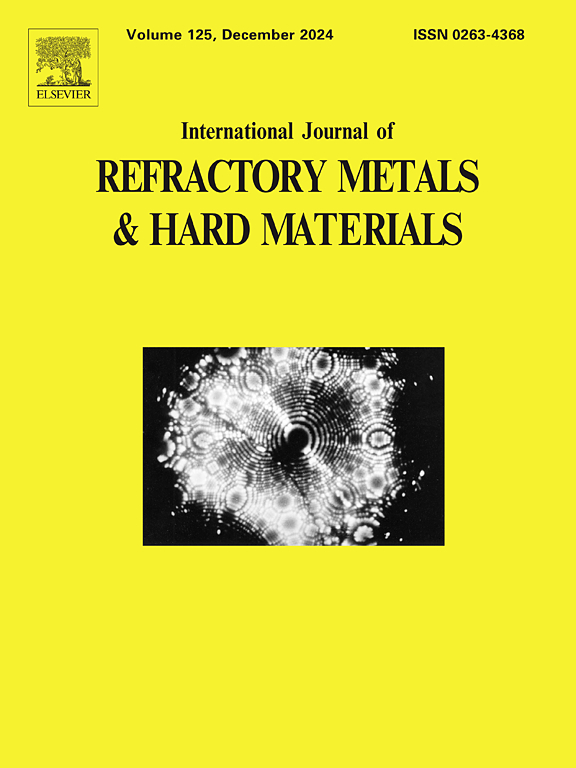耦合CO2捕集和易耗阳极电解制备锆的新工艺
IF 4.2
2区 材料科学
Q2 MATERIALS SCIENCE, MULTIDISCIPLINARY
International Journal of Refractory Metals & Hard Materials
Pub Date : 2025-04-30
DOI:10.1016/j.ijrmhm.2025.107213
引用次数: 0
摘要
全球气候威胁的加剧主要是由人类活动产生的二氧化碳(CO2)排放造成的。尽管传统的碳捕获方法已经取得了进步,但它们面临着巨大的挑战,包括高能耗和二次污染风险,从而限制了它们的可扩展性。本研究提出了一种将CO2捕集与熔盐电解相结合以制备锆(Zr)的新方法。采用循环伏安法(CV)和方波伏安法(SWV)研究了CO2在CaCl2-CaO熔盐体系中的电化学还原机理。在不同电压下(3.0-2.5 V,持续8 h), ZrO2转化为Zr- c - o复合产品的相变和可控碳化过程中,在3 V下,持续8 h,得到了氧化锆(ZrCxOy)。以ZrCxOy作为消耗性阳极,电解在2.9 V下,持续8 h,得到了金属Zr,显示了这种双重方法同时解决金属生产和碳捕获的潜力。本文章由计算机程序翻译,如有差异,请以英文原文为准。
Novel process for preparing zirconium by coupling CO2 capture and consumable anode electrolysis
The intensifying global climate threat is predominantly fueled by carbon dioxide (CO2) emissions from human activities. Although traditional carbon capture methods have advanced, they face significant challenges including high energy demands and secondary pollution risks, thus limiting their scalability. This study proposes a novel approach that integrates CO2 capture with molten salt electrolysis for the preparation of zirconium (Zr). Using cyclic voltammetry (CV) and square wave voltammetry (SWV), we investigated the electrochemical reduction mechanism of CO2 in a CaCl2-CaO molten salt system. The phase transitions and controlled carbonization during the conversion of ZrO2 to Zr-C-O composite product were carried out at various voltages (3.0–2.5 V for 8 h), and zirconium carboxide (ZrCxOy) were obtained at 3 V for 8 h. Electrolysis using ZrCxOy as the consumable anode yielded metallic Zr at 2.9 V for 8 h, displaying the potential of this dual approach to address both metal production and carbon capture.
求助全文
通过发布文献求助,成功后即可免费获取论文全文。
去求助
来源期刊
CiteScore
7.00
自引率
13.90%
发文量
236
审稿时长
35 days
期刊介绍:
The International Journal of Refractory Metals and Hard Materials (IJRMHM) publishes original research articles concerned with all aspects of refractory metals and hard materials. Refractory metals are defined as metals with melting points higher than 1800 °C. These are tungsten, molybdenum, chromium, tantalum, niobium, hafnium, and rhenium, as well as many compounds and alloys based thereupon. Hard materials that are included in the scope of this journal are defined as materials with hardness values higher than 1000 kg/mm2, primarily intended for applications as manufacturing tools or wear resistant components in mechanical systems. Thus they encompass carbides, nitrides and borides of metals, and related compounds. A special focus of this journal is put on the family of hardmetals, which is also known as cemented tungsten carbide, and cermets which are based on titanium carbide and carbonitrides with or without a metal binder. Ceramics and superhard materials including diamond and cubic boron nitride may also be accepted provided the subject material is presented as hard materials as defined above.

 求助内容:
求助内容: 应助结果提醒方式:
应助结果提醒方式:


